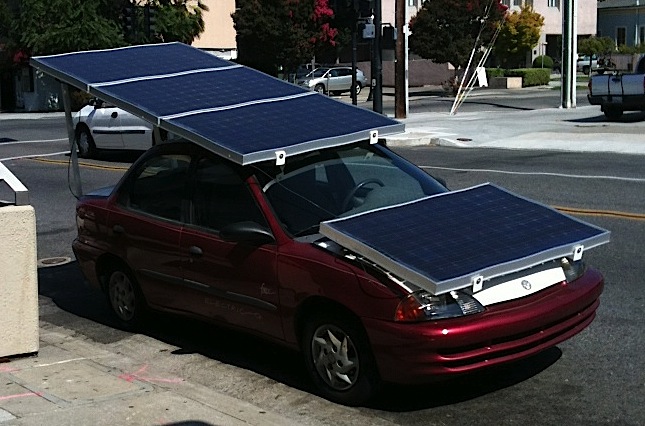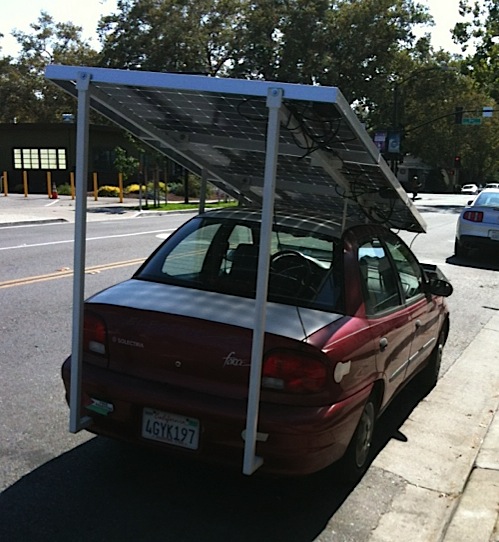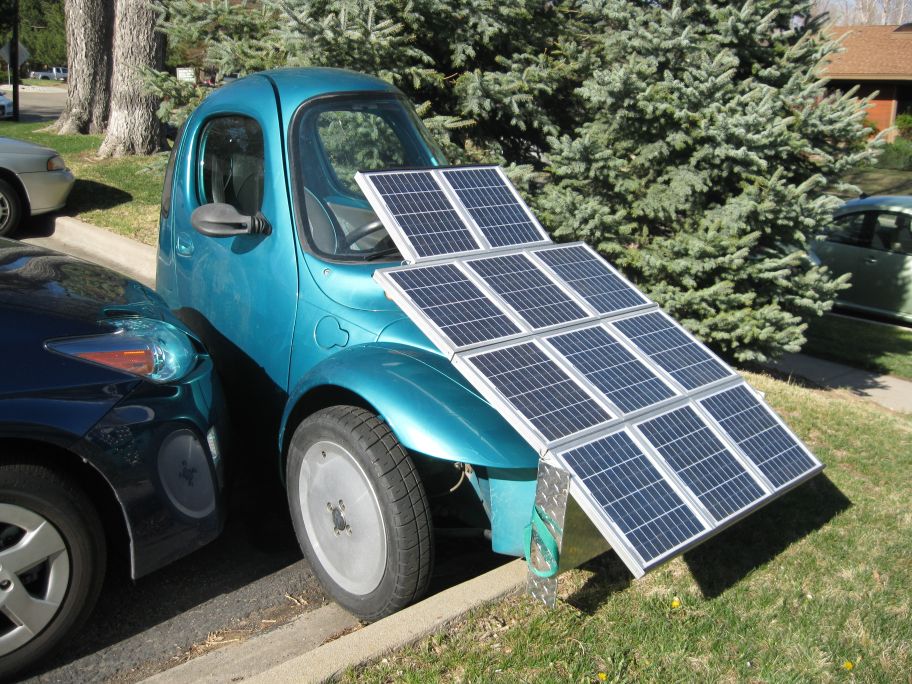PV1, I admire your tenacity pursuing this subject, even though the math perhaps by now should have shown you the negligible benefits relative to the cost and effort; nevertheless, I thought you might enjoy the following two photos of a solar-assisted Solectria Force which were posted a few days ago on our local Electric Auto Association mail list. No information available about this contraption. BTW, I assume you're planning on solar-->regulator-->?Vbattery-->inverter-->EVSE-->J1772, or were you thinking of adapting to CHAdeMO? So, what's the latest with having a simple 120vac outlet at work and save yourself lots of time and $$$? When are you going to get an iMiEV?










































